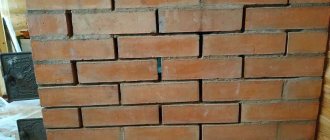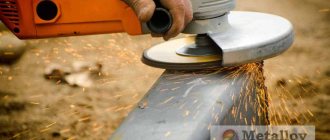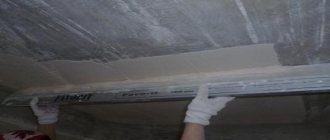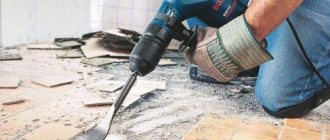Sanding a wooden frame is a rather labor-intensive process that requires special endurance. To do the job efficiently, you will need good tools and certain construction skills. Many experts argue that it is impossible for a person who does not have a construction specialty to carry out the work of sanding walls on their own. However, the presence of the Internet in our lives, where you can find almost any step-by-step instructions for a particular job, allows you to think differently. This material is no exception. Here you can get acquainted with the complete technological process of polishing the walls of a log house and decide for yourself whether you can do the same, only with your own hands.
Why do you need to sand a frame?
Many of you have probably noticed that some houses built of wood have a darkened, not entirely natural appearance. This is because throughout the year, the tree was exposed to natural influences, such as snow, rain, wind and frost. It is because of this that the wood darkens, losing its excellent original appearance.
Sanding the surface of the log house and then applying various protective layers to it will help preserve the natural texture and color of the log for many years.
You can sand a log house either made from round logs or made from laminated veneer lumber. The entire work process is practically mechanized, since it is performed manually using various electric tools.
Services of professional craftsmen
Proper sanding provides a beautiful and durable finish and ensures the long life of your home. Our specialists have extensive experience, have the necessary work skills, and know the nuances and subtleties of grinding work. We will polish your wooden house strictly according to technology, taking into account the individual characteristics of the structure and within the strictly agreed time frame. When inspecting your home, the craftsmen will select the optimal grinding method and the necessary tools for surface treatment. You can call a specialist and contact us using the coordinates in the “Contacts” section.
Calculate the cost of painting and insulating your home right now
Select types of work:
Select materials:
When to grind
Opinions are divided on whether to sand the walls of the log house immediately or wait for it to completely shrink and dry. Some believe that waiting until the log house shrinks and the wood shrinks is too long, because the process is quite long, depending on many external factors such as:
- Log cutting season;
- Log manufacturing technologies;
- Type of wood, its density and humidity;
- Type of insulation used between the crowns;
- Climatic data of the region.
In addition, during this period the wood can become infected with fungus and change its color.
Others believe that this matter should not be rushed. The darkened color of the wood will disappear after sanding, and the fungus can be easily removed using biological impregnation. It is necessary to fully comply with all the necessary conditions for an effective and high-quality result.
To do this, the roof must be covered, the structure must completely shrink, but most importantly, the moisture content of the wood should not exceed 20%.
Despite the divergence of opinions, experts still recommend making your choice in favor of the second option. Premature processing and painting of damp walls can result in big troubles for the owner.
In addition, it is not necessary to curtail construction work to wait for the log house to be ready for grinding. During this period, you can work on plumbing and electrical wiring, laying floors, ceilings, and installing windows and doors.
Tool required for work
The working tool must be selected based on what material the log house is built from (chopped logs, rounded logs, or timber).
Only tools, or rather not even tools, but accessories for work, will be needed in all three cases - safety glasses and a respirator.
Chopped log
To sand the walls of a log house built from ordinary logs, you will need an ordinary grinder with special attachments. When purchasing an angle grinder, it is better to make your choice in favor of a professional, or at least semi-professional tool.
Since the walls will have to be sanded from the outside and inside, and these are very large areas to work on, a cheap and low-quality tool will fail after the first or second wall. Moreover, grinding walls puts a lot of stress on the tool, due to the long, continuous process of work.
The power of the grinder will be sufficient : 800-1100 W. You can, of course, take a more powerful one, so to speak with a reserve, but for grinding this is more than enough. A grinder with high power will be much harder to work with. This is due to the fact that it has considerable weight and quite high rotation speeds. One wrong move and a hole appears on the log, which is not so easy to smooth out later. You should also pay attention to:
- Length of the electrical cable - too short and not very convenient to use;
- Power adjustment - in places that are inconvenient for work, for safety you should slightly reduce the speed;
- Place of air intake into the engine - it is advisable for the air intake to be from the back of the angle grinder, and not from its side walls, so it will become less clogged with dust, which will increase the service life of the tool.
- A special screw-on attachment for an angle grinder, onto which a sanding disc is attached, can be purchased at any construction supermarket. For grinding, wheels with different grain sizes from 40 to 60 for initial processing and from 80 to 100 for finishing.
Rounded log
Since a rounded log has a semicircular, perfectly flat surface, using a grinder would not be appropriate. If you move it carelessly, you can make a depression or groove on the log, greatly ruining the appearance. The ideal way to sand a log frame made from rounded logs is to use an eccentric sander.
Despite the fact that its productivity is much lower, the operating principle of this tool will make the surface of the log perfectly smooth. The machine uses a special blocking element that turns it off when pressed hard, which allows work to be done by a person who has no experience in this matter.
Using an eccentric sander
The power of an eccentric sander is only 300-400 W. , number of revolutions from 8,000 to 12,000 rpm . More expensive models are equipped with a special dust bag. This is very convenient for interior work.
On a note! The tool is selected according to the principle “It fits comfortably in the hand”, which means we take it. For primary processing, wheels with a grain size of 40-60 , for finishing 80-100 .
Glued or profiled timber
Sanding a log house whose walls are made of timber is done in two ways.
- The first way is to use a well-known grinder and grinding wheels. All work to give the beam a perfectly even and smooth shape, in comparison with a round log, can be done in a much shorter time.
This is due to the fact that the timber has a flat surface, which is much easier to work with. However, not everyone can cope with this task. This requires practice and good skill with the tool, since any error on the wall will be clearly visible. If there is no such practice, then it is better to resort to the second option.
Sanded timber
There are two standard types of wooden beams:
- Profiled timber - is a solid log passed through special equipment that gives it a certain shape (profile);
- Glued laminated timber is a pre-prepared log, sawn into boards, which are then dried in special chambers to 10-14% humidity. The finished boards are tightly glued together in a pressing machine into a single piece, from which the profile of the timber itself is then made.
On a note! Due to the fact that laminated veneer lumber is a dried, practically non-shrinking building material, you can begin sanding it immediately after the walls are erected.
With profiled timber, everything is different; most often it is made from freshly sawn timber, so you need to give the log house time to shrink and dry out, and only then begin work.
- The second method is to use an orbital sander. This method, although not as fast, is of better quality. In addition, sanding the wooden walls of a house can be done with your own hands, without resorting to the help of an expensive team of specialists.
The machine should be purchased with a rectangular rather than a round platform. It is easier to work with such a machine; the rectangular platform has a large coverage area, which will certainly affect the speed of work.
Vibratory sander
Advantages of the technique
Non-contact grinding of log frames ensures very high quality processing. The main advantage of the technology is the uniform removal of the top layer of wood, which is almost impossible to do manually.
After sanding, there are no traces left on the logs in the form of scratches, dents and irregularities, which very often appear on wood after processing it with a grinder, especially in cases where people who do not have professional skills take on the work.
If we summarize all the advantages of the sandblasting technique, then in addition to the above, they look like this:
- High processing speed, which is four times higher than grinding with a grinder. Abrasive jet grinding allows processing up to 100 sq.m. wooden surface in one working day. But it should be borne in mind that these terms are relevant for new buildings; when sanding an old house, the time doubles.
- The impeccable quality of log polishing, provided that it is performed by qualified specialists, does not raise any complaints even among the most demanding customers.
- The technology allows you to process any areas of the log house to perfect condition: corner joints, chamfers, joints, inter-crown seams.
- As a result of processing, the wood is compacted by removing the soft layers of wood. This ensures better absorption of protective agents and longer service life of the paintwork.
- Possibility of treating darkened and fungus-affected surfaces without prior bleaching with special products.
Do-it-yourself grinding of a log house - process technology
The first thing you need to start with is to check all the walls of the log house for defects, such as “radial structure”. What it is? Radial structure is the process of peeling off the wood structure as a result of poor-quality processing of the log in the machine.
If such places exist, the resulting cavities are filled with wood putty, which can be matched to the color of the wood. Allow the putty to dry completely for 10-24 hours , only then begin work.
Existing wood putty colors
You can start sanding from the ends of the log house; any novice “specialist” can handle them; besides, the first training will help you feel a little more confident when moving on to the walls.
Although this will be your training ground, sanding the ends cannot be neglected. The fact is that they are the weakest point of the log house; these places are more susceptible to getting wet and cracking.
Advice! To minimize damage, after treating the ends with coarse sandpaper, they should be smoothed with finer sandpaper. This will help get rid of the fibrous surface and make the so-called clogging of the ends, protecting them from moisture.
Correct grinding of the ends of the log house
Working with an angle grinder
When grinding timber with a grinder, the tool must be held strictly parallel to the plane of the wall. The pressure on it should be minimal, this will avoid surface changes, making the walls perfectly smooth.
The grooves are polished using uniform, consistent movements, while holding the tool firmly in your hands. You need to carefully ensure that the corners of the grooves are even and sharp; they cannot be rounded.
Grinding grooves is quite a labor-intensive and complex process, even for specialists. Therefore, if you do not have enough experience and skills, you can purchase a sander with a triangular groove attachment.
Important! Remember that you must give the grinder time to rest, as with any electric tool it is afraid of overheating. Otherwise, it’s just a matter of time before your reliable assistant fails.
Working with the machine
Using an eccentric or vibratory sander to polish a log frame makes the work process less complicated, but longer. No special skills in using the tool are required; all you need to do is read the instructions well and carry out a trial test on an unnecessary board.
After this, we move the tool with smooth movements along the surface of the beam or log until the surface is perfectly smooth. The grooves need to be sanded, holding the machine at an angle, parallel to the surface, giving their lines a clear geometric shape.
What mistakes are made when working independently?
- When working with tools, high speeds should not be allowed. This will leave unevenness and grooves on the walls.
- When sanding coniferous timber, you must first remove any remaining resin. If this is not done, sanding will spread the resin over the surface in a thin layer and it will be almost impossible to remove it.
- Defects in the timber that are not coated with adhesive will become disheveled after sanding and will look more unsightly.
- After coating with varnishes or water-based paints, the pile rises. For complete leveling, after the first coating, re-grind with a wheel No. 120. You can use chemical-based compounds; they do not affect the pile.
- Sanding is carried out before the main finishing and installation of windows, doors, and ceilings. This will make it easier to remove wood dust, of which there will be a lot.
The faster sanding is completed, the easier the work will be. Over time, the wood hardens and performance will decline. Try to sand immediately after or during construction.











